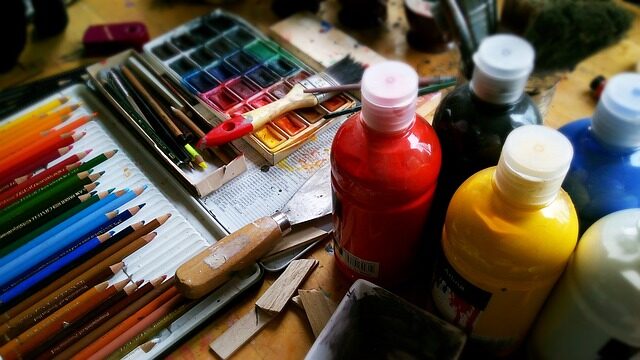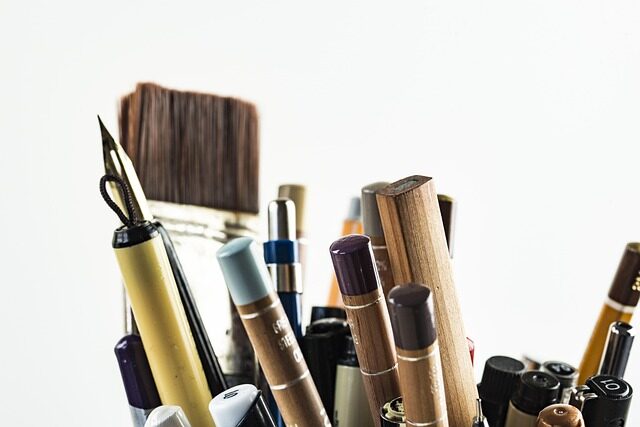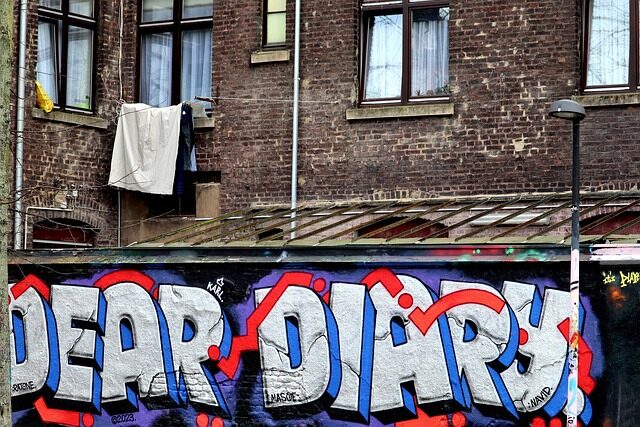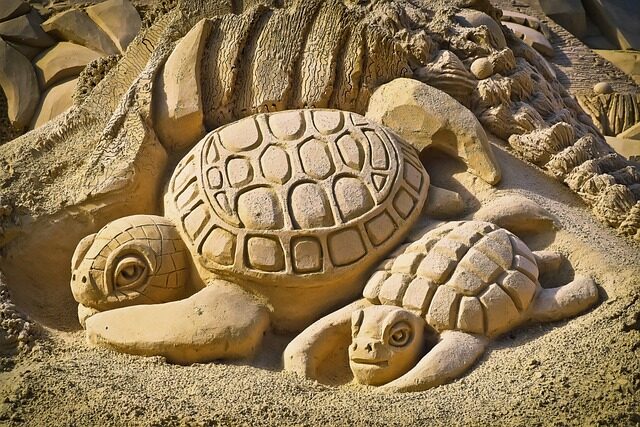The story of Renaissance art in Denmark is a tale woven with the threads of transformation and cultural rebirth. From the 16th to 17th century, this Northern European nation witnessed a remarkable period that mirrored the broader European Renaissance, yet with a unique Danish identity.
Marked by shifting religious paradigms and royal patronage, Danish art evolved to reflect both indigenous creativity and external influences. Let’s embark on a journey to explore the evolution, features, and key figures of this fascinating artistic epoch.
- The Evolution of Renaissance Art in Denmark
- What Is Renaissance Art in Denmark?
- How Did the Reformation Influence Danish Renaissance Art?
- What Are the Key Features of Danish Renaissance Art?
- Who Were the Prominent Artists During the Danish Renaissance?
- What Museums Showcase Renaissance Art in Denmark?
- How Does Danish Renaissance Art Reflect Societal Changes?
- The Evolution of Renaissance Art in Denmark
- What Is Renaissance Art in Denmark?
- How Did the Reformation Influence Danish Renaissance Art?
- What Are the Key Features of Danish Renaissance Art?
- Who Were the Prominent Artists During the Danish Renaissance?
- What Museums Showcase Renaissance Art in Denmark?
- How Does Danish Renaissance Art Reflect Societal Changes?
The Evolution of Renaissance Art in Denmark
Denmark’s Renaissance art illustrates a dynamic shift in aesthetic norms and themes, fueled primarily by the Reformation. As the nation transitioned from Catholicism to Protestantism, art became both a medium for religious expression and a declaration of royal power.
The confiscation of church lands by the Danish Crown played a pivotal role in redistributing wealth and influence, which in turn funded artistic endeavors. Despite political and military challenges, the arts continued to flourish, symbolizing the nation’s resilience and cultural ambition.
During this time, Denmark aspired for Baltic dominance, but the subsequent military conflicts, particularly with Sweden, led to the eventual establishment of an absolute monarchy – an era that would also leave its mark on the arts.
This era saw the rise of a burgeoning merchant class, whose newfound wealth and influence also contributed to the patronage of the arts. Art became a symbol of personal status and pride, leading to increased demand for portraiture and decorative art pieces in homes.

Lastly, the linguistic shift from Latin to Danish not only democratized religious practice but also allowed for the flourishing of literature and the visual arts, making them more accessible to the Danish populace.
What Is Renaissance Art in Denmark?
Reflecting on Renaissance art in Denmark, it represents a period of rejuvenation in artistic expression, deeply intertwined with the cultural and religious upheaval of the Reformation. Art during this period was characterized by a renewed interest in classical antiquity.
Despite a reliance on imported talent due to the Reformation’s impact on local artistic practices, the Danish Renaissance bore witness to a unique amalgamation of Nordic tradition and European Renaissance influences.
The Royal Art Museum and its collections stand as testaments to the nation’s artistic journey, housing key artifacts that span from the Middle Ages through to the threshold of the absolute monarchy.
Moreover, the legacy of medieval Danish painting, primarily through church frescos, and the archaeological finds such as the Trundholm sun chariot, offer insights into the pre-Renaissance artistic sensibilities that laid the groundwork for future innovation.
The Reformation not only altered the religious landscape but also the artistic one, gradually leading to the emergence of a distinctive Danish style during the subsequent Danish Golden Age.

How Did the Reformation Influence Danish Renaissance Art?
The Reformation was a catalyst for profound change in Danish art. As the Danish Church shifted from Catholicism to Protestantism, so too did its artistic commissions and patronage.
The Protestant institution, with its different values and iconoclastic tendencies, discouraged the lavish religious art that characterized the Catholic Church. This led to a decline in religious imagery and a rise in secular art forms.
Artists began to focus more on humanism and the material world, aligning with the broader European Renaissance ideals.
The transition of the church’s language from Latin to Danish also meant that biblical stories and moral messages in art now needed to be more accessible to the common people.
Despite these changes, the Reformation also allowed the Danish Crown to exert greater control over religious art, particularly through the commissioning of works that promoted the monarchy and Protestant values.
What Are the Key Features of Danish Renaissance Art?
- Humanism: Reflecting the Renaissance spirit, Danish art began to celebrate human intellect, emotions, and physical beauty.
- Naturalism: A greater emphasis on realistic depictions of nature and people, as opposed to the stylized forms of the earlier medieval period.
- Portraiture: Increased demand for portraiture by the burgeoning nobility and merchant classes as a symbol of status and identity.
- Secular Themes: A shift towards secular themes due to the Protestant Reformation’s influence on religious art.
- Classical Influence: Revival of classical themes and motifs, reflecting an admiration for Greco-Roman art and culture.
Who Were the Prominent Artists During the Danish Renaissance?
While the Danish Renaissance may not be as globally renowned as its Italian counterpart, it too had its share of notable artists.

Artists like Michel Sittow and the brothers Jacob and Abraham Binck brought their talents to Danish courts, blending Nordic sensibilities with continental techniques.
Even though many local artists of this era remain unnamed today, their work, especially in architectural design and craftsmanship, still stands as a testament to their skill and creativity.
It’s also important to note that this was a time when the arts were heavily influenced by foreign expertise, a trend that would only begin to reverse with the advent of the Danish Golden Age.
These artists, many of whom have been lost to the annals of history, were instrumental in creating a distinctive Danish Renaissance style that would pave the way for future generations of artists.
What Museums Showcase Renaissance Art in Denmark?
Denmark is home to several museums that proudly showcase the nation’s Renaissance art. The Royal Art Museum stands at the forefront, offering both permanent and temporary exhibitions that highlight Denmark’s rich artistic legacy.
The National Gallery of Denmark and the Museum of National History at Frederiksborg Castle also house significant collections from this era, ensuring that the art of the Renaissance remains accessible to all.

These institutions not only exhibit the famous art in Denmark but also play a crucial role in preserving and interpreting the artistic heritage for future generations.
Further, many local churches across Denmark still contain original frescos and artworks from the Renaissance period, allowing visitors to experience history in situ.
Through their preservation efforts, these museums and historical sites allow for the continued study and appreciation of Danish Renaissance art and its impact on the nation’s cultural fabric.
How Does Danish Renaissance Art Reflect Societal Changes?
Renaissance art in Denmark is a mirror to the societal changes of its time. As the middle class expanded and the nobility rose in power, art became a tool to showcase wealth, education, and influence.
The shift away from religiously themed art to more secular subjects reflected the changing norms and priorities in Danish society following the Reformation.
The influence of the absolute monarchy is also evident in the art of the time, with royal patronage shaping the themes and subjects of many notable works.

The integration of classical themes showcased a society in intellectual and artistic dialogue with the rest of Europe, while the enduring gothic and medieval elements spoke to the continuity of local traditions.
In the grand tapestry of Danish Renaissance art, one can discern the complex interplay between tradition and innovation, local identity and European trends, and the secular versus the sacred.
As we delve deeper into the art of this period, let’s take a moment to enjoy a video that further explores Renaissance art in Denmark.
By examining Danish Renaissance art, we gain invaluable insights into the transformative power of cultural movements and the enduring legacy of a nation’s creative expression. From the upheaval of the Reformation to the splendor of the Danish Golden Age, the art of this period continues to captivate and inspire, inviting us to explore the rich tapestry of Denmark’s history through the works of its artists.

